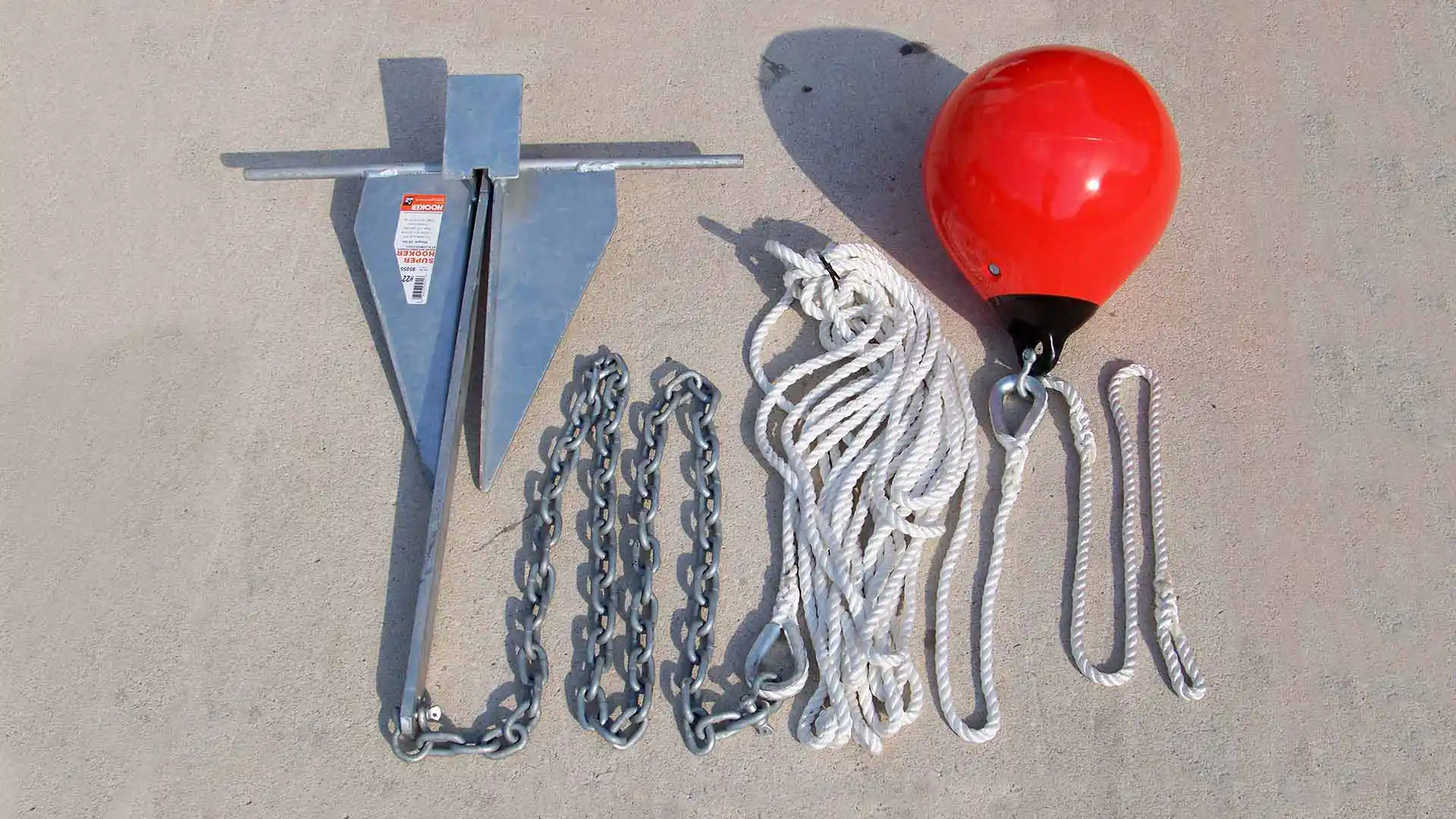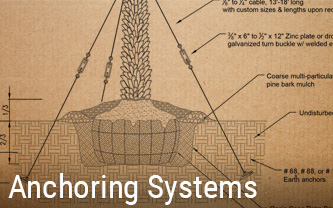Efficient Anchor Solutions Designed for Optimum Toughness
The design of efficient anchor systems is vital in making sure optimal toughness and reliability across various applications, particularly in civil and marine engineering. By employing innovative materials and progressed engineering methods, these systems not only enhance holding power but also adapt to challenging environmental problems. As we discover the different kinds of anchor systems and the materials that underpin their effectiveness, it becomes evident that the future of securing modern technology might hold even better innovations. What effects do these growths have for security and efficiency requirements in the market?
Significance of Anchor Systems
Support systems play a vital role in numerous applications, from marine construction to overseas drilling and also in the stability of structures ashore. Their primary function is to offer secure holding power, making certain that structures continue to be stable and safe under various ecological conditions. In marine environments, anchors are essential for mooring vessels, protecting against drift due to wind, currents, or waves. Without reliable anchoring, ships may go to risk of crash or grounding, leading to considerable financial and ecological consequences.
In enhancement to marine applications, anchor systems are crucial in civil design, especially in the building and construction of keeping wall surfaces, bridges, and structures in geologically tough areas. These systems help distribute tons effectively, combating pressures such as dirt pressure and seismic activity. The significance of support systems reaches the renewable energy industry, where they protect wind generators and overseas systems, adding to the stability and efficiency of energy generation.
Eventually, the efficiency of an anchor system is basic to the safety, sturdiness, and performance of different frameworks, making their style and application an essential part in design and building and construction techniques across multiple industries.
Innovative Products in Support Layout

Modern developments in products scientific research have dramatically changed anchor layout, boosting efficiency and resilience. The incorporation of composite materials and high-strength alloys has actually caused anchors that can hold up against extreme ecological conditions while keeping structural honesty. These ingenious products not only supply exceptional tensile toughness however additionally minimize weight, enhancing convenience of installation and handling.
One remarkable development is the usage of carbon fiber reinforced polymers (CFRP), which supply excellent rust resistance and high strength-to-weight proportions. This permits the design of anchors that are both light-weight and extremely resistant, making them suitable for marine applications where direct exposure to saltwater can cause material deterioration.
In addition, advancements in finishes-- such as innovative epoxy and galvanization-- further secure steel supports from corrosion, prolonging their life span. These finishes can be customized to meet particular environmental difficulties, making certain that anchors carry out dependably even in extreme problems.
In addition, the integration of smart materials, which can adapt to altering tons and ecological variables, is leading the way for future anchor styles. These advancements highlight a pattern in the direction of higher effectiveness and integrity in securing options, inevitably enhancing safety across various applications.
Kinds Of Efficient Support Equipments
Reliable securing remedies are essential for guaranteeing stability and safety in numerous applications, from building and construction to aquatic procedures. A number of sorts of efficient support systems attract attention for their performance and versatility to different settings.
One prominent type is the screw support, which makes use of a helical layout to offer remarkable holding power in soil and soft ground. These anchors are specifically valuable in momentary structures and can be easily gotten rid of and recycled.
One more widely used system is the driven pile support, commonly utilized in heavy and aquatic building projects. These supports are driven deep into the ground, offering excellent resistance to side forces, making them ideal for sustaining big frameworks.
For aquatic applications, the mooring buoy anchor system is necessary. This system includes resilient tools connected to supports on the seabed, allowing vessels to continue to be steady while decreasing drag from currents and winds.
Lastly, the deadweight anchor system counts on heavy weights to provide security and is typically made use of in offshore setups. Each kind of anchor system is made to meet details requirements, making certain the safety and honesty of structures and vessels in numerous problems.
Security Specifications and Rules
Ensuring the security and reliability of anchoring systems entails adherence to rigorous safety standards and policies. These requirements are developed by numerous companies, including the American Society for Testing and Materials (ASTM), the International Company for Standardization (ISO), and regional building ordinance. Conformity with these laws is critical to guarantee that anchoring systems can endure environmental tensions and tons, minimizing the threat of failing.
Examining and qualification procedures are basic parts of security requirements. Anchoring systems should go through extensive evaluations, including tensile stamina tests, fatigue examinations, and ecological effect analyses. These tests help determine the systems' efficiency under real-world conditions, ensuring they meet or Read Full Report go beyond the needed security thresholds.
Moreover, suppliers are called for to supply comprehensive specifications and instructions for installment and look at more info upkeep, which are essential to upholding safety and security criteria. Routine assessment and maintenance methods need to likewise be established to recognize prospective weaknesses with time.
Future Patterns in Anchor Modern Technology
The future of anchor modern technology is positioned for considerable advancements, driven by the increasing need for enhanced safety and security and performance in building and construction and engineering applications. Innovations are anticipated in products, style, and installation strategies, which will certainly boost the toughness and toughness of anchor systems.
One arising fad is the combination of clever innovation right into anchor systems. Earth Anchor. By integrating sensors, these systems can check tension, lots, and environmental conditions in real-time, enabling proactive upkeep and increased dependability. In addition, developments in composite products may bring about lighter, yet stronger anchors that can stand up to severe conditions, minimizing the total weight of structures


Additionally, modular anchor systems are gaining traction, permitting less complicated installment and versatility to different task address demands. Earth Anchor. As the market accepts automation, robotic installation strategies might even more improve the anchoring process, boosting performance and precision
Conclusion
Finally, efficient anchor systems play a vital role in ensuring the security and security of civil and aquatic engineering tasks. The consolidation of innovative products and advanced designs dramatically improves holding power and resistance to various ecological difficulties. Adherence to safety and security requirements and policies better highlights the importance of reliability in anchor systems. As technology proceeds to develop, future fads are expected to concentrate on smart surveillance services and lasting materials, leading the way for improved efficiency and longevity.
The layout of efficient anchor systems is critical in guaranteeing optimal toughness and reliability throughout various applications, especially in aquatic and civil engineering. As we check out the various kinds of anchor systems and the materials that underpin their efficiency, it comes to be evident that the future of anchoring innovation may hold also better advancements.Guaranteeing the security and dependability of securing systems entails adherence to stringent safety standards and policies.In final thought, effective support systems play a vital duty in making certain the security and safety and security of marine and civil design tasks. Adherence to safety and security standards and regulations further underscores the importance of reliability in anchor systems.